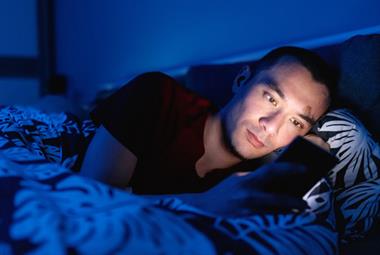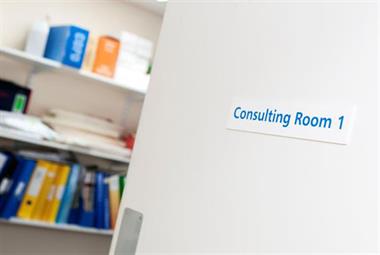This article was initiated by Idorsia Pharmaceuticals UK Ltd. Idorsia has paid GPonline for the publication of this article. The views and opinions expressed in this article are those of the author, Dr Jonathan Sunkersing. Idorsia had no editorial control and reviewed the article for ABPI Code compliance only.
As a GP, I have witnessed firsthand the profound impact that chronic insomnia can have on individuals and their overall health. Often misunderstood and underdiagnosed, chronic insomnia is more than just trouble sleeping. It is a persistent medical condition that impacts a person’s ability to fall or stay asleep, for at least three nights per week, for at least three months, despite adequate opportunity for sleep.1,2 It is estimated that 6-10% of the adult population have chronic insomnia.1
As GPs, we are ideally positioned to identify and manage chronic insomnia. Some patients often describe the nighttime symptoms; the inability to fall asleep and frequent awakenings.1,2 Many experience unrefreshing sleep and carry a heavy burden of daytime impairments including fatigue, poor concentration, irritability, and mood disturbances;3 affecting professional and personal lives with serious long-term consequences.4 It’s important for GPs to recognise these presentations as potential indicators of chronic insomnia.
Effective management
Effective management in primary care starts with a thorough evaluation to both confirm the diagnosis and look for other causes of the patient’s symptoms. This distinction is necessary because treating chronic insomnia independently could significantly improve a patient's overall health and wellbeing, even with other comorbidities present.
We have robust evidence to show that if chronic insomnia is treated effectively, there is a decreased risk of certain diseases developing, such as cardiovascular disease, stroke, obesity, diabetes, depression and anxiety.5,6,7,8,9 There is also a reduced risk of accidents10,11,12,13 and an improvement in workplace productivity.14 So, it’s worth investing the time in treating chronic insomnia effectively to improve patients' quality of life and reduce the burden on our healthcare system.
Cognitive behavioural therapy for insomnia (CBT-i) is currently first-line therapy for the treatment of chronic insomnia,15 however access can be limited. It would help if GPs had a grasp of all available therapeutic options in order to facilitate a balanced discussion with patients.
Treatment options
In my opinion, modern approaches advocate for a combination of both behavioural therapies and medications, tailored to individual patient needs and preferences. Discussing the pros and cons of each option allows for a more patient-centred approach.
A significant barrier to effective management is the lack of awareness and education among both patients and GPs. Many patients are unaware that chronic insomnia is a treatable condition; discouraging them from reporting their sleep issues.16 There have been advancements in the treatment options available for chronic insomnia.15
Educating patients about the importance of sleep health and the availability of effective management strategies can empower them to seek help from their GPs.
For GPs, ongoing education about chronic insomnia and its management is crucial. Understanding how to confidently diagnose and manage the condition can lead to better patient outcomes, especially given the time constraints in primary care settings.
Chronic insomnia is a prevalent and serious condition that demands more attention in primary care. It’s not just a nighttime problem — it’s a treatable 24-hour disorder with far-reaching implications that we have the tools to address effectively.
- Dr Jonathan Sunkersing is a GP with a special interest in sleep medicine
This article was initiated by Idorsia Pharmaceuticals UK Ltd. Idorsia has paid GPonline for the publication of this article. The views and opinions expressed in this article are those of the author, Dr Jonathan Sunkersing. Idorsia had no editorial control and reviewed the article for ABPI Code compliance only.
References
- The Diagnostic and Statistical Manual of Mental Disorders (5th ed.; DSM–5; American Psychiatric Association, 2013).
- The International Classification of Sleep Disorders (3rd ed.; ICSD-3; American Academy of Sleep Medicine, 2014).
- Morin, C.M., et al. Nat Rev Dis Primers. 2015;1:15026.
- Morin C.M., et al. JAMA Netw Open. 2020;3(11):e2018782.
- Li L., et al. Sleep Med Rev. 2021;56:101403.
- Sogol J., et al. Chest. 2017;152(2):435–444.
- Hertenstein E., et al. Sleep Med Rev. 2019;43:96-105.
- Shamim S., et al. Cureus. 2019;11(10):e6004.
- Sadegh Mousavi S, et al. J Neuroinflamm. 2020; 289.
- Chen, T-Y., et al. Sleep. 2017;40(11): zsx142.
- Erickson, E.A., et al. MSMR. 2017;24(12):2-11.
- DiBonaventura, M., et al. PLoS ONE. 2015;10(10):e0137117.
- Shahly, V., et al. Arch Gen Psychiatry. 2012;69(10):1054-63.
- Hafner M., et al. The Societal and Economic Burden of Insomnia in Adults: An International Study. Santa Monica, C.A.: RAND Corporation, 2023.
- NICE. Scenario: Managing insomnia. 2024. Available at: https://cks.nice.org.uk/topics/insomnia/management/managing-insomnia/
- Perlis, M.L., et al. Lancet. 2022;400(10357):1047-1060.
UK-DSA-00041
Date of preparation: July 2024












